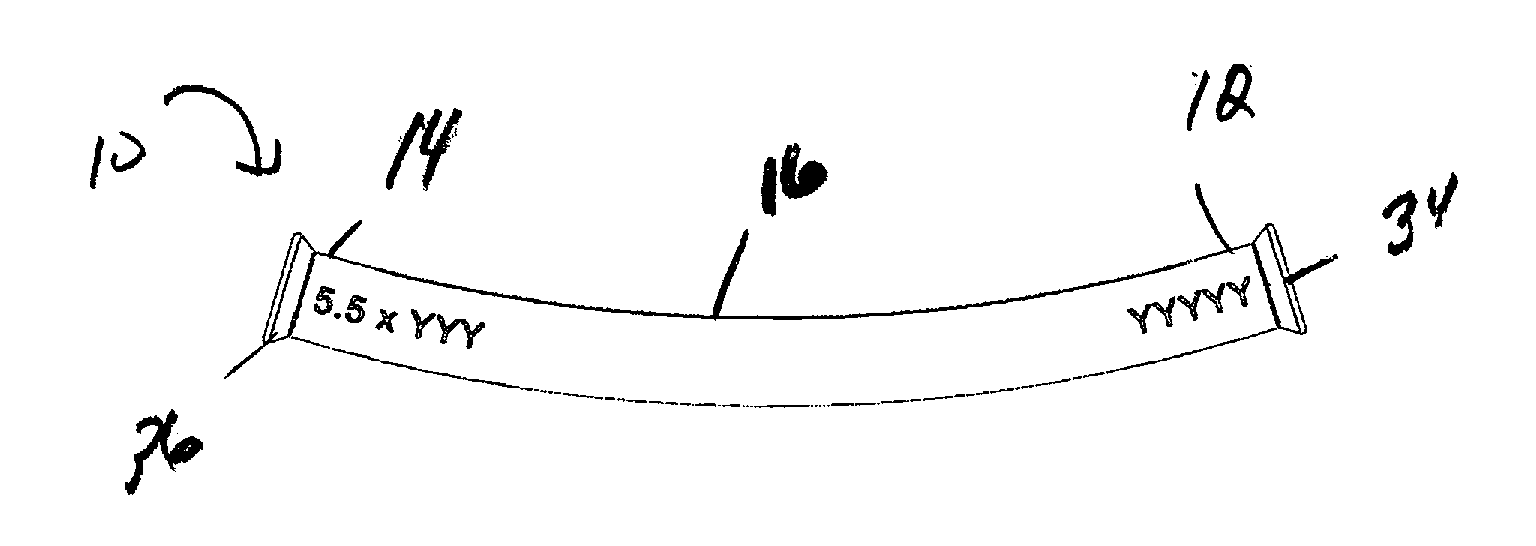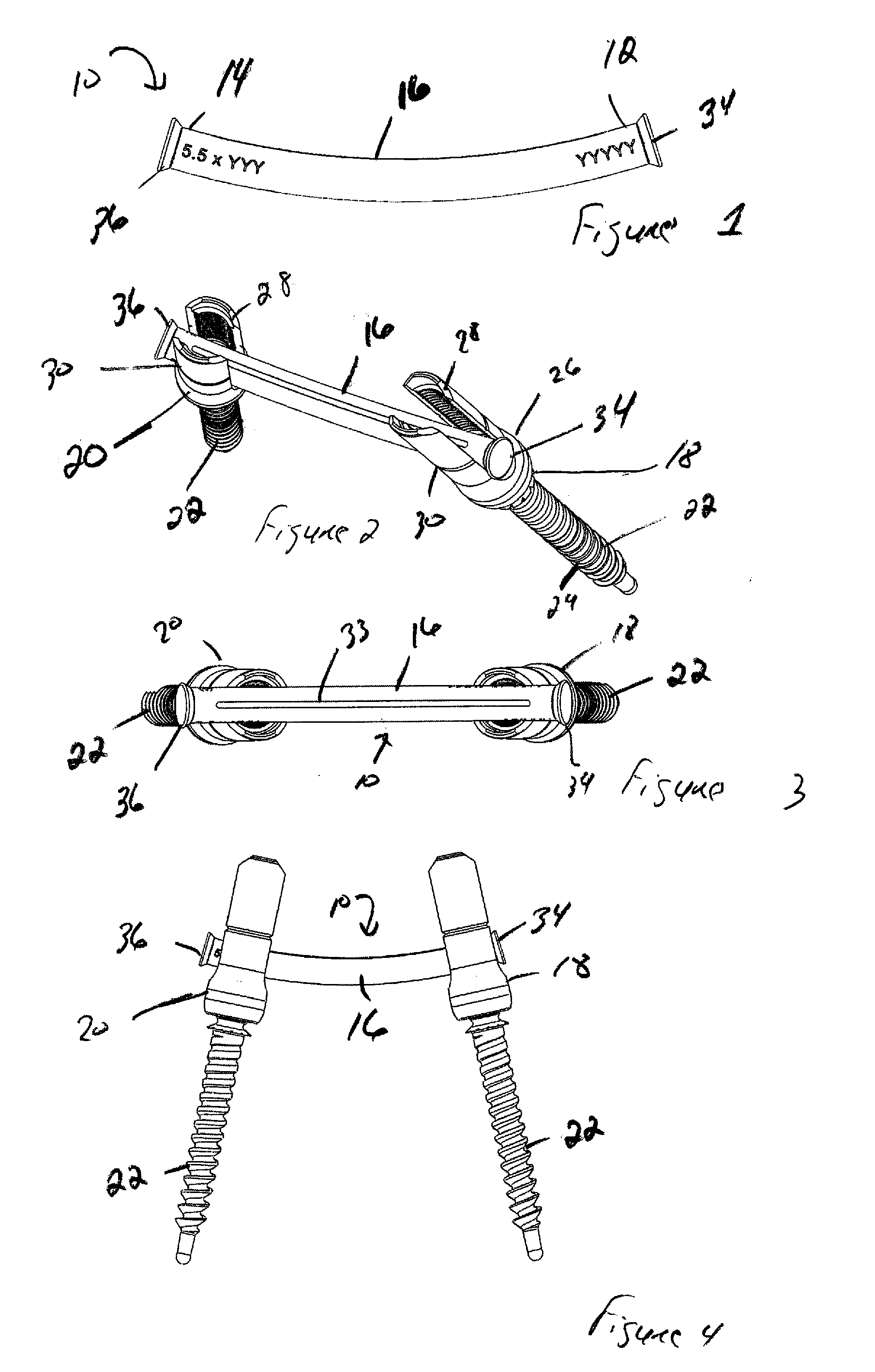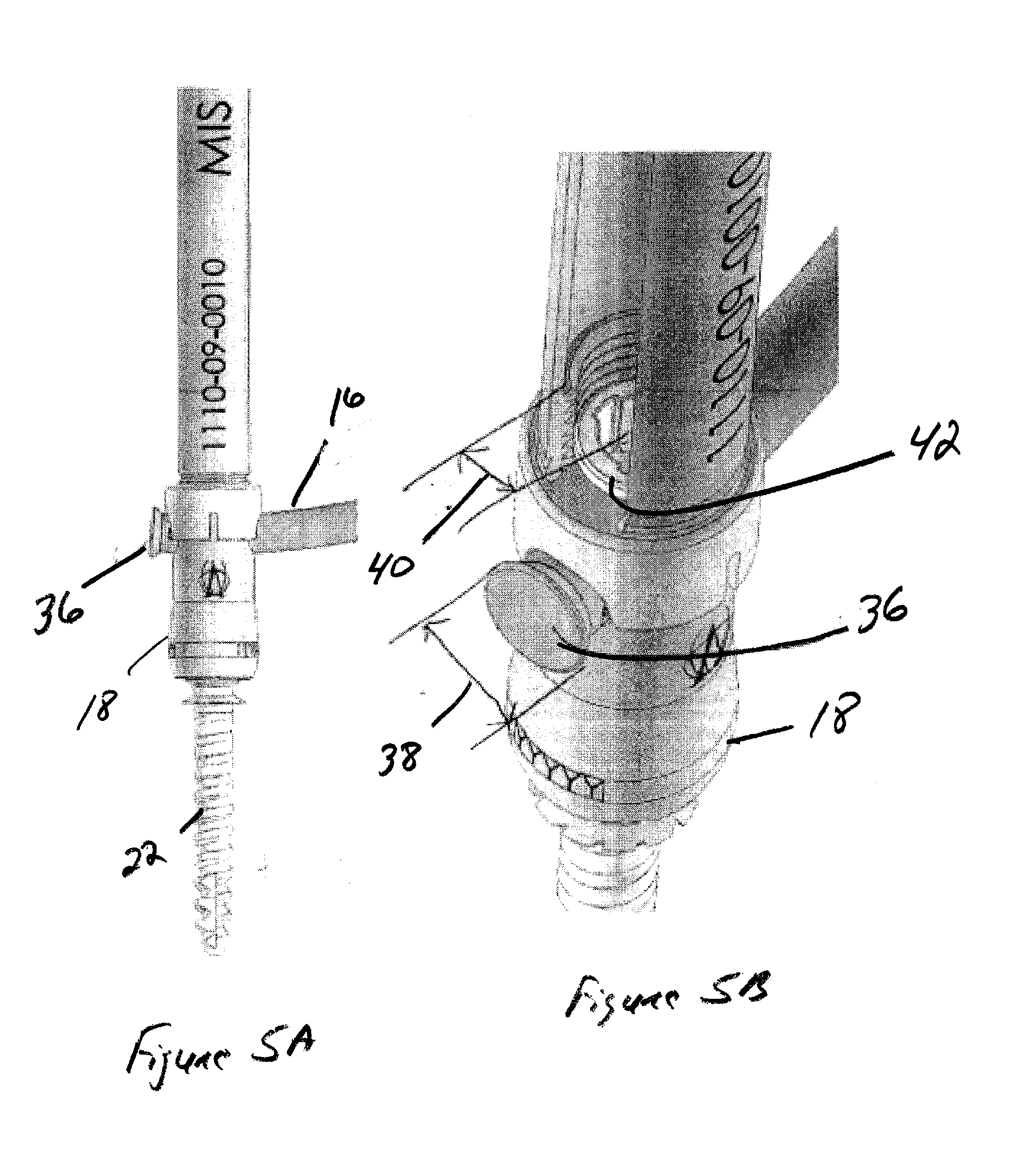Minimally invasive spine surgery instruments: spinal rod with flange
a spine surgery and minimally invasive technology, applied in the field of spine surgery instruments, can solve the problems of unnecessarily selecting the rod size, affecting the surgeon's ability to perform surgery, so as to achieve adequate engagement and improve the effect of assessing and controlling the proper alignmen
- Summary
- Abstract
- Description
- Claims
- Application Information
AI Technical Summary
Benefits of technology
Problems solved by technology
Method used
Image
Examples
Embodiment Construction
[0019]Referring to FIGS. 1-5B, set forth is a bone fixation device, illustrated herein as a spinal rod 10. The spinal rod 10 comprises a first end 12, a second opposing end 14, and a main body 16 there between. The main body 16 is preferably elongated having a generally cylindrical shape constructed and arranged to secure to a plurality of bone screw anchors, such as pedicle screw assemblies 18 and 20. In one embodiment, the main body 16 may be linear. Alternatively, the main body 16 may have a predetermined curvature. As used herein, the term pedicle screw assembly is used to define and / or describe commonly used orthopedic or spinal surgical instrumentation. While many embodiments of a pedicle screw exist commercially, the typical pedicle screw assembly consists generally of the pedicle screw 22 containing a threaded portion 24 which is inserted into a bone or spinal vertebrae. Connected to the screw is a housing unit 26 having upwardly shaped arms 28 and 30 which form a U-shape un...
PUM
 Login to View More
Login to View More Abstract
Description
Claims
Application Information
 Login to View More
Login to View More - R&D
- Intellectual Property
- Life Sciences
- Materials
- Tech Scout
- Unparalleled Data Quality
- Higher Quality Content
- 60% Fewer Hallucinations
Browse by: Latest US Patents, China's latest patents, Technical Efficacy Thesaurus, Application Domain, Technology Topic, Popular Technical Reports.
© 2025 PatSnap. All rights reserved.Legal|Privacy policy|Modern Slavery Act Transparency Statement|Sitemap|About US| Contact US: help@patsnap.com



